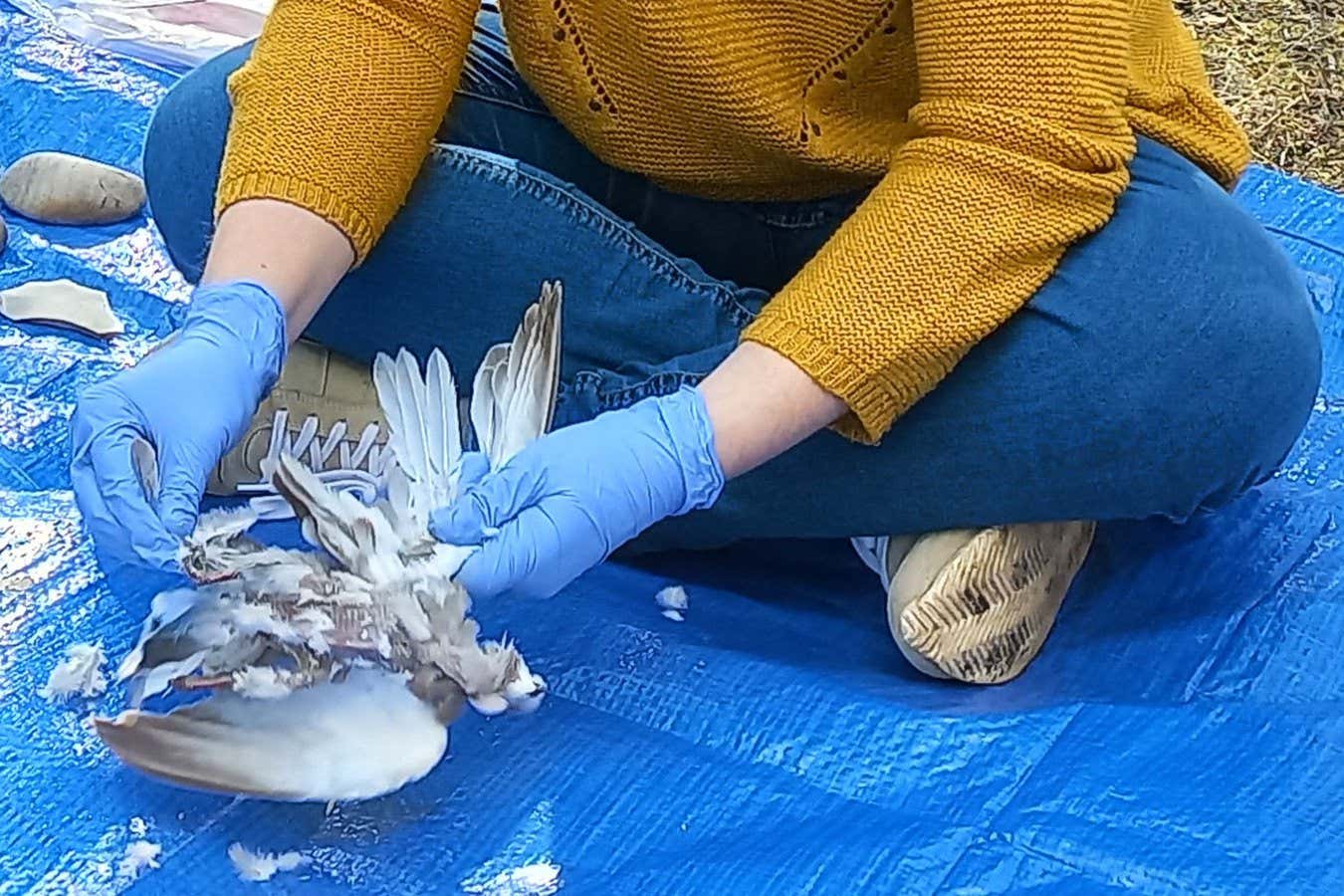In an effort to understand ancient Neanderthal food preparation techniques, researchers butchered five wild birds using flint stone tools and roasted them
By James Woodford
24 July 2024
A researcher plucks a bird as part of an experiment into Neanderthals’ cooking skills
Mariana Nabais
Archaeologists have cooked and prepared five wild birds using only fire, their hands and stone tools to learn more about the culinary abilities of Neanderthals. The experiment shows it took considerable manual skill for our ancient relatives to butcher animals using flint blades without injuring themselves.
Neanderthals inhabited Europe and Asia until around 40,000 years ago. Hearths have been found at many Neanderthal sites, and we also have evidence they hunted large animals like elephants and cave lions.
Read more
Our human ancestors often ate each other, and for surprising reasons
Advertisement
Mariana Nabais at the Catalan Institute of Human Paleoecology and Social Evolution in Tarragona, Spain, says by replicating ancient activities such as cooking and butchering with the tools available at the time, scientists can gain insight into how prehistoric humans lived.
She and her colleagues wanted to better understand archaeological bird remains associated with Neanderthals that were recovered from deposits in Portugal, which date to approximately 90,000 years ago.
The team selected five birds that had died in a Portuguese wildlife rehabilitation centre and were of a similar size and species to those found in the archaeological deposits: two carrion crows , a common wood pigeon and two Eurasian collared doves . The tools used in the experiment were flint flakes prepared by lithic technology students.
